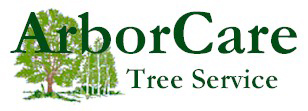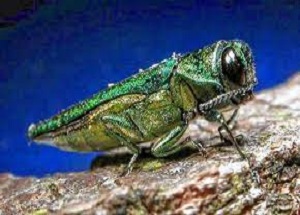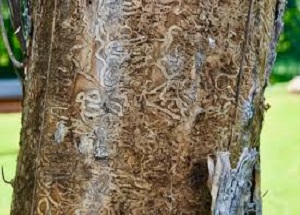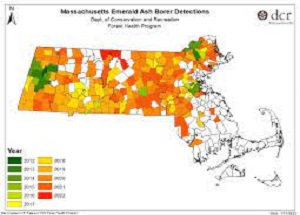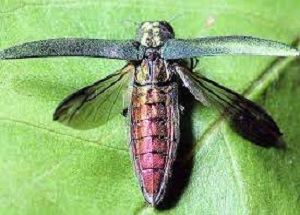Emerald Ash Borer - Life Cycle
Like all beetles, the emerald ash borer undergoes complete metamorphosis
(is holometabolous) with four life stages: egg, larva, pupa, and adult. Adults are a dark green metallic color and approximately ½ inch
long. They are the only Agrilus species in North America known to have a bright metallic coppery-red (may also appear purple) dorsal
surface of their abdomen. (The wings must be lifted to see that feature.) Larvae are white, 1 to 1.25 inches long at maturity, have a
small brown head, a pair of brown pincers at the end of the abdomen, and have bell-shaped abdominal segments. The fourth instar larvae
overwinter in a pre-pupal stage in a J-shaped position. Pupae are present in the spring and look like cream-colored adults that begin
to darken as they develop. The larval and pupal stages are found beneath the bark of their host trees, as the larvae feed on the nutrient
and water conducting tissues of the plant. Adults emerge in May and June and mate and lay tiny, flat, oval shaped eggs that are initially
whitish-yellow in color and turn reddish-brown as they develop. Eggs are difficult to see as they are approximately 1/32 of an inch and
laid in cracks and crevices of the bark. On average, females can lay 55 eggs in their lifetime, but some have been observed laying more
than 150 eggs. Adult emergence creates D-shaped exit holes in the bark.
(University of Massachusetts)
(University of Massachusetts)

